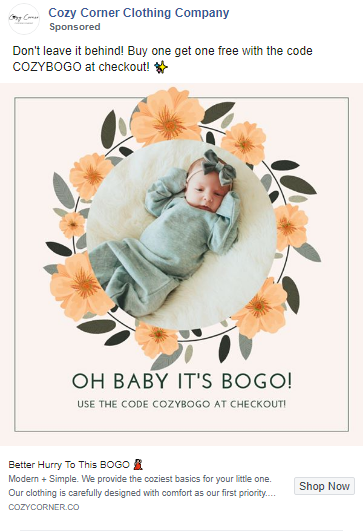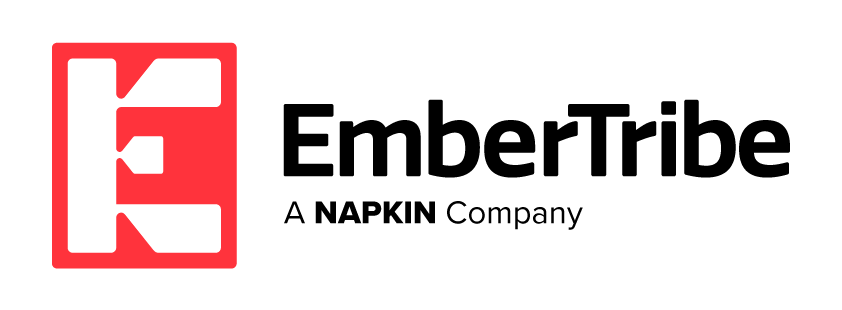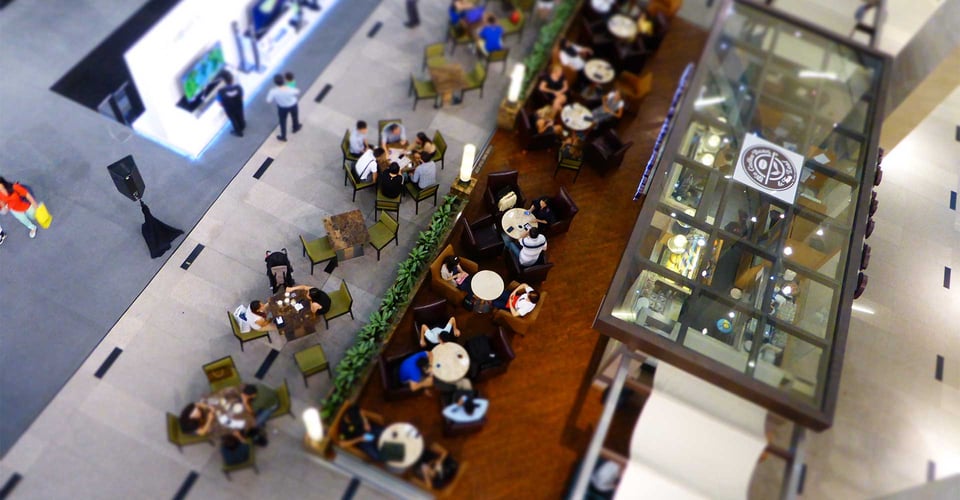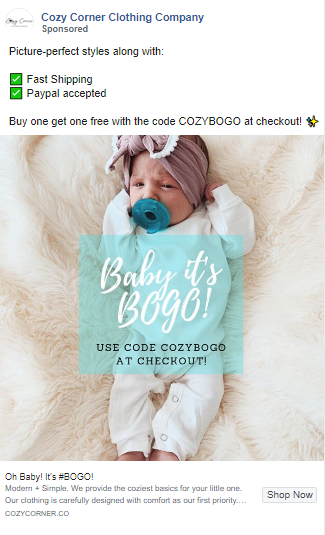Immediately after implementation we saw a 153% increase in overall ROAS the next week. We also saw a 46% in content views, 489% increase in cart adds, and quadruple the number of purchases we had the previous week.
However, our DPA’s still struggled to see results as exciting. We switched up copy, tried narrowing the product set to popular products, as well as incorporated a conversion campaign, but we still were not seeing results as successful as our top of funnel.
While 50% was working, we decided to test it out in another form: BOGO. Because the offer is already so marked down in the top of the funnel, we made the assumption that it drastically lost effect seen later in the funnel, thus the plateau of results in the DPAs and the conversion campaign.

Think of it this way. You pass a furniture store with a big 50% off sign in front of it. It catches your attention and draws you in. Perhaps you even eye a few items that you may want but you’re not quite ready to pull the trigger. So you leave without making a purchase. The next day, you pass the store again, and see the same sign. Does that sign draw you back in?
Probably not. It’s not a different offer, nor doing anything different to push you past the window shopping you did before.
The next day you drive by and there’s a new sign in front of the store: BOGO.
It’s a different discount, and close to 50% off (once you math real hard and calculate what you’ve made), but disguised in a mask that looks very different.
It gives the appearance of offering more value without really doing so. When we implemented this in our bottom of funnel campaigns, we saw a 70% increase in our bottom of funnel conversion campaign ROAS and an 11% increase in overall ROAS. We also saw 50% more purchases at the bottom of the funnel.
Overall, with the switch of strategy, we were able to almost triple ROAS and see 5 times more purchases than we did before the discounts. Best of all we were able to increase volume without sacrificing profit margin—ROAS actually grew here and by a substantial amount.
Lessons Learned
Sometimes brands want to veer away from using discounts for a number of reasons. In this case, the client was afraid of losing profit margin. Theoretically, it would make sense that a discount here would only amplify that fear by making the theory true in practice.
However in practice, using a discount, even at the top of funnel, proved to be very profitable.
Think of it as a gateway. You’re acquiring a customer for less and with the discount (especially true in BOGO), and in return, they spend more because the discount allows them to think they’re getting more of a deal. We’ve all done it: walked into Target or another retailer, saw the sale, stocked up, then picked up a few non-sale items as well and justified it to ourselves because we were saving money with the other items. With this client, in particular, we saw a higher ROAS from cost of acquisition drastically falling and a higher average order value — even with the discount.
We’ve seen this with other clients as well. Customers will enter the site during a sale and stock up, driving the average order values up and the ROAS with them.
So don’t be afraid to discount! Use it as a vehicle to get customers in the door, and, hopefully like this client the results will be worthwhile.





